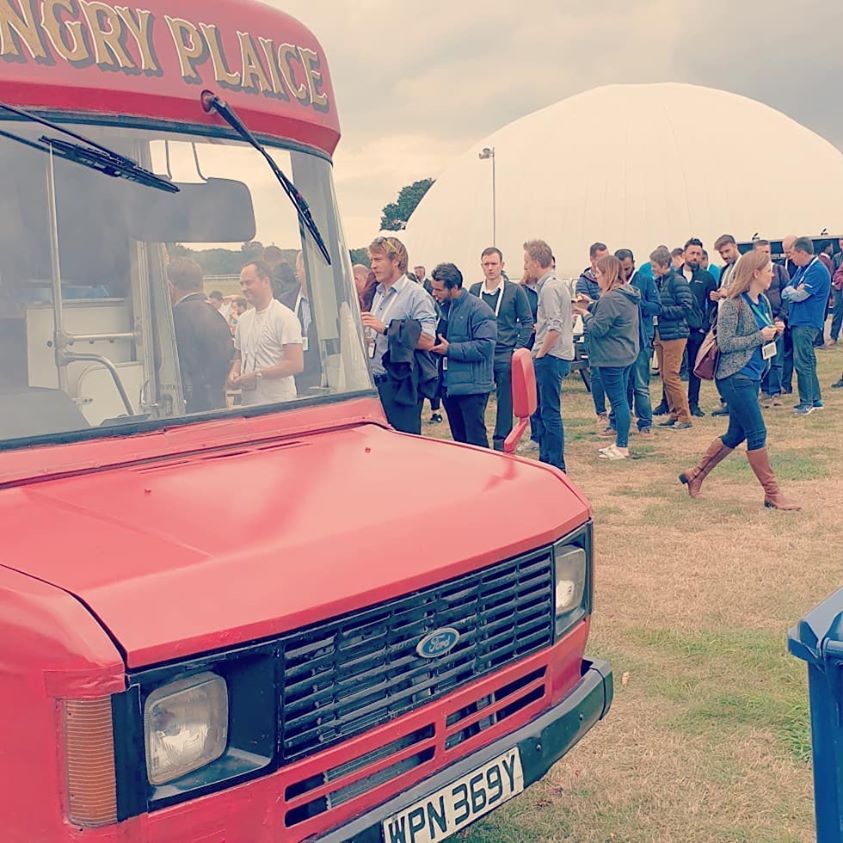In today’s fast-paced business landscape, engaging attendees at corporate events has never been more crucial. Gone are the days of passive participation where a simple PowerPoint presentation would suffice. Instead, companies must create immersive experiences that captivate audiences and foster meaningful connections. Engagement isn't just a nice-to-have; it directly influences knowledge retention, networking potential, and even brand perception.
Transform Your Corporate Events with Virtual Reality Magic
Transform Your Corporate Events with Virtual Reality Magic
Enter virtual reality (VR) technology—an innovative game-changer ready to transform the way we host corporate gatherings. With VR, event planners can dive into dynamic environments that spark curiosity and inspire interaction. Imagine stepping into a fully-realized world where participants can explore new products or collaborate in lifelike simulations. This isn’t merely about novelty; it’s about creating memorable experiences that leave lasting impressions. Ready to discover how VR magic can elevate your next corporate event? Let’s explore the possibilities together!
The Benefits of Virtual Reality in Corporate Events
Virtual reality (VR) technology is redefining how corporate events are experienced, offering unprecedented levels of engagement and interactivity. Traditional methods often struggle to captivate attendees in a digital landscape where distractions are just a click away. VR, however, immerses participants in environments that not only capture attention but actively involve them in their learning and networking experience. Imagine an attendee using VR goggles to step into a fully interactive 3D model of a new product—navigating its features with full autonomy while gaining nuanced insights from embedded multimedia content. This high level of engagement can dramatically enhance information retention compared to conventional presentations or brochures.
The transformative capability of VR extends beyond mere interaction; it also fosters the creation of memorable experiences that remain imprinted on attendees long after the event concludes. A great example of this can be seen in the annual conferences hosted by tech companies like Salesforce, which have integrated VR into their agendas. Attendees can explore virtual offices showcasing innovative solutions or engage in simulations that exemplify the company's groundbreaking technologies—elements that evoke excitement and enthusiasm rather than passive listening. This experiential learning creates emotional connections between individuals and brands, enhancing brand loyalty and advocacy.
Moreover, VR enables customization at unprecedented scales to suit various audience needs and preferences. For instance, HR teams can utilize VR platforms for immersive team-building exercises, allowing employees from different locations to collaborate within a shared virtual space without geographical barriers. What results is not only increased team cohesion but also a holistic integration of company culture among dispersed teams—a critical factor in today’s increasingly remote work environment.
Ultimately, these benefits culminate in creating an enriched atmosphere where corporate events transcend traditional boundaries. Enhanced interactivity leads to deeper participant investment while unforgettable moments contribute significantly to overall satisfaction levels. As organizations seek innovative avenues for ensuring their events stand out amid ongoing digital shifts, embracing VR could very well be the key to unlocking greater success—the kind that resonates well beyond the confines of the event itself.
Case Studies: Successful VR Implementations
Several organizations have paved the way for virtual reality (VR) integration into their corporate events, showcasing not only creativity but also significant engagement benefits. One striking example is the automotive giant Audi, which utilized VR during its annual product launch event. By providing attendees with immersive virtual test drives of their latest vehicles, the company succeeded in elevating the brand experience. Participants could explore new features and navigate creative environments, leading to increased excitement about the products and a noticeable spike in post-event purchases.
Similarly, PwC adopted VR technology to enhance its training sessions, transforming traditional presentation methods into interactive learning experiences. Employees were immersed in realistic simulations that reflected real-life client interactions and challenges they might face on the job. This hands-on approach fostered deeper understanding and retention of complex concepts, ultimately preparing staff more effectively for client engagements. Post-training feedback indicated higher confidence levels among employees and an increased willingness to apply learned skills in real scenarios.
Moreover, international tech company IBM extended its use of VR beyond mere presentations by hosting virtual networking events where participants from different geographical locations could collaborate seamlessly. They created a shared digital environment where attendees could interact with each other through avatars while discussing project ideas and establishing connections. The result was a 70% increase in participant engagement compared to previous hybrid networking models—a clear indicator that VR creates more meaningful interactions than standard video conferencing tools.
In these examples, we see how organizations effectively leveraged VR technology to transform their corporate events from routine gatherings into dynamic platforms that enhance learning and interaction. Such case studies not only demonstrate innovative problem-solving but also serve as inspiring blueprints for other companies looking to elevate their event strategies through cutting-edge technology like virtual reality.
Types of Virtual Reality Experiences
Virtual reality (VR) offers a rich array of immersive experiences that can significantly enhance corporate events. One prominent application is in product demonstrations and exhibitions. Through VR technology, attendees can engage with products in a dynamic, 3D setting, simulating real-world interactions. For example, an automotive company might develop a VR experience allowing potential buyers to virtually test drive their latest models on an intricate digital track. This not only captivates participants but also leaves them with vivid memories of the features and capabilities of the vehicles, fostering deeper connections than traditional methods could achieve.
Another compelling use of virtual reality in corporate events is for interactive training sessions and simulations. Organizations can create realistic training environments that mimic real-life scenarios without the associated risks or costs. A healthcare company might utilize VR to train medical professionals on complex procedures in a controlled yet immersive atmosphere. Attendees can practice skills through lifelike simulations, where they receive immediate feedback on their performance, better preparing them for actual situations while enhancing retention rates far beyond conventional classroom settings.
Furthermore, virtual networking opportunities are revolutionizing how participants connect during corporate events. Platforms powered by VR allow attendees from different geographical locations to meet and interact in shared virtual spaces that mimic physical environments like conference rooms or open lounges. Imagine hosting a global conference where people from around the world gather within a meticulously designed virtual venue to network over drinks at a simulated bar or participate in brainstorming sessions by “sitting” together at round tables—all without leaving their offices or homes. This innovative approach reduces travel expenses and builds camaraderie among teams, thus enriching business relationships.
Lastly, team-building exercises have also found a new ally in virtual reality experiences. Companies can devise challenges that require collaboration among employees, such as solving puzzles within fantastical landscapes or completing tasks against one another in exciting competitions all within the realm of VR. By promoting teamwork through shared challenges—whether facing off against each other in engaging games or working collaboratively towards a common goal—employees build lasting bonds while experiencing first-hand how VR fosters communication and cooperation beyond usual office dynamics, making these newfound relationships even more impactful after the event concludes.
Overcoming Challenges in Implementation
Integrating virtual reality (VR) into corporate events can initially seem daunting, primarily due to concerns surrounding the technology's complexity and logistics. Event planners often worry about managing hardware requirements, ensuring seamless software functionality, and providing adequate technical support during the event. While these challenges are valid, they are not insurmountable. Companies that have successfully implemented VR solutions report that proper planning and resource allocation can mitigate most issues.
One of the predominant challenges is selecting appropriate hardware for your audience size and venue. High-quality VR headsets can be expensive, but companies like Oculus and HTC have introduced various models catering to different budgets. Renting equipment instead of purchasing it outright is a viable option many organizations are turning to—this approach not only saves costs but also allows access to cutting-edge technology without long-term commitments. Additionally, pairing each headset with user-friendly interfaces ensures participants can quickly acclimate to the technology, reducing anxiety around using new devices.
Software compatibility is another critical factor in successful VR event execution. Utilizing platforms designed specifically for corporate uses helps streamline this process; for instance, platforms like vFairs or Engage offer customizable experiences that suit various business needs while maintaining easy integration with existing systems. Furthermore, preparing an authentic test run ahead of the main event allows potential hiccups to be addressed proactively rather than on-the-fly when guests arrive.
Finally, having dedicated technical support staff onsite is crucial for addressing any real-time issues that may arise during the event. Hiring specialists familiar with both the hardware and software can alleviate attendees' frustrations—ensuring a smooth experience fosters engagement rather than confusion. Also worth considering is offering a brief orientation session before diving into VR activities; equipping attendees with essential tips enhances usability while demystifying technology often perceived as complex or intimidating. As such, by embracing strategic planning and proactive measures, corporate event planners can confidently navigate and overcome implementation challenges associated with virtual reality experiences.
Cost Considerations: Investing in VR Technology
When considering the integration of virtual reality (VR) technology into corporate events, event planners must conduct a thorough analysis of budget implications. The initial investment can appear daunting, especially for companies that have traditionally relied on more conventional methods of engagement. Costs can vary widely based on factors such as hardware requirements, software licensing fees, and the complexity of the VR experiences being developed. For instance, setting up an immersive VR booth may require not only state-of-the-art headsets but also powerful computers to run demanding applications smoothly. Despite these initial expenses, forward-thinking planners understand that VR has the potential to transform attendee engagement and satisfaction in ways that justify its cost.
However, it’s essential to weigh these short-term costs against long-term benefits that come with using VR technology. Companies like Ford have successfully utilized virtual reality for vehicle training; although the upfront expense was significant, they reported reduced training time and increased retention rates among employees. Furthermore, the ability to reach larger audiences virtually through holographic presentations or interactive content adds substantial value—when compared to dwindling returns from traditional seminar formats. Additionally, by creating memorable experiences and high-impact interactions with your brand, attendees are likely to share their positive experiences via word-of-mouth and social media, thus expanding your company’s outreach without incremental marketing expenditure.
Moreover, investing in VR can lead to significant operational savings over time through enhanced efficiency and reduced resource consumption. Imagine conducting a complex exhibit featuring multiple products or services without physical prototypes—this not only reduces fabrication costs but also minimizes logistics challenges associated with shipping large quantities of items. As businesses adapt to fluctuating economic conditions following global events such as COVID-19—which dramatically shifted how we connect—embracing budget-conscious yet cutting-edge solutions like VR shows adaptability while seeking innovative avenues for effective communication.
In summary, while the upfront costs of integrating VR technology into corporate events might be substantial at first glance, savvy event planners will recognize that these investments yield extensive savings and engagement improvements in the long run. By prioritizing customer experience through innovative technology options such as virtual reality, companies stand poised not just to survive but thrive in an ever-evolving market landscape. Embracing this shift can lead to a competitive advantage that manifests well beyond any immediate financial evaluations.
Future Trends: The Evolution of Virtual Reality in Corporate Events
As virtual reality technology continues to advance, the future of corporate events looks brighter and more immersive than ever. One key prediction is that VR will become increasingly integrated with other emerging technologies, such as artificial intelligence (AI) and augmented reality (AR). This convergence will create a hybrid event experience where virtual attendees can interact not only with realistic environments but also engage with intelligent systems that provide personalized insights and curated content tailored to their interests. Imagine an AI-driven virtual assistant guiding participants through a vast digital trade show, always ready to facilitate networking opportunities based on shared interests or professional backgrounds.
Moreover, the evolution of VR hardware will further enhance the user experience. As headsets become lighter, more affordable, and equipped with better graphics capabilities, they will be more accessible for both organizers and attendees. Companies like Oculus and HTC are constantly refining their devices to create seamless experiences with lower entry barriers for users. Additionally, cloud-based VR services will eliminate many logistical challenges associated with event planning by allowing companies to easily host virtual spaces without heavy investment in infrastructure or equipment. As 5G networks roll out worldwide, fast internet speeds will enable smoother streaming of high-quality VR content without delays or interruptions.
The rise of remote work culture has already begun reshaping corporate gatherings; in the coming years, we can expect an even greater demand for versatile solutions that cater to both in-person and virtual audiences simultaneously. Hybrid events that use VR technology are anticipated to explode in popularity, enriching both attendee experiences regardless of location. For instance, executives participating from around the globe could be "teleported" into engaging workshops while sharing digital spaces with colleagues physically present at the venue—a dynamic fusion that makes collaboration truly borderless.
Ultimately, as organizations start embracing these forward-thinking approaches to corporate events fueled by innovative technologies like VR, they will unlock new avenues for creativity and engagement within their workforce. Event planners who harness this potential early on stand to benefit immensely by creating memorable occasions that transcend traditional meeting formats—an essential strategy amid today’s rapidly evolving business landscape where adaptability often determines success.
Tips for Planning a Successful VR Event
Integrating virtual reality into your event agenda requires thoughtful planning and execution to ensure smooth operations and an unforgettable experience for attendees. One best practice is to incorporate VR experiences at various touchpoints throughout the event rather than confining them to a single segment. For example, consider having short VR engagement stations during breaks between sessions, allowing participants to immerse themselves in quick, captivating experiences without derailing the event flow. This approach keeps energy levels high and facilitates natural conversations around the innovative technology among participants.
Engagement doesn't stop with tech-savvy attendees; it's crucial to accommodate those who may be less familiar or comfortable with VR. Create an engaging onboarding experience by providing brief tutorials or demonstrations before immersive activities begin. Designate dedicated staff members as "VR guides" who can assist and answer questions from less experienced users during their journey into the virtual realm. For instance, at a recent marketing summit, organizers established 'tech help' desks where participants could get hands-on assistance, resulting in significantly higher participation rates among non-tech-savvy attendees.
Additionally, consider offering alternative participation options that don’t require goggles for guests who may feel overwhelmed by VR technology. Craft engaging multimedia experiences like live-streamed panels or interactive 360-degree videos that provide similar immersive content accessible on smartphones or tablets. This ensures that everyone can still engage with key messages while encouraging discussions amongst both VR enthusiasts and novices alike—a strategy that not only broadens reach but also enhances networking opportunities across different participant comfort levels.
Finally, always remember to gather feedback post-event as part of your evaluation process. Use surveys that assess attendee satisfaction specifically regarding their VR experience while seeking any technological pitfalls they encountered. Such insights are invaluable for refining future events and creating even more engaging virtual offerings thereafter. As organizations embrace innovative technologies like VR, aligning logistical elements with user experience becomes paramount in maximizing overall impact!
Measuring Success: Evaluating Your Virtual Reality Event
Once you've incorporated virtual reality (VR) into your corporate event, the next crucial step is to evaluate its success. Effective measurement tools and metrics allow you to assess attendee engagement and satisfaction effectively. These can range from quantitative metrics such as participation rates and session durations to qualitative feedback provided through surveys and interviews. For example, consider employing VR analytics software that tracks user interactions in real-time—information on which experiences guests logged the most time with could indicate stronger interest or enjoyment.
Gathering feedback after your event is equally important for future improvements. Post-event surveys can provide invaluable insights but be sure to structure them strategically. Incorporating both Likert scale questions and open-ended prompts encourages attendees to express their thoughts more freely, helping you paint a fuller picture of their experience. You might ask specific questions like "What was your favorite VR activity?" or "How did the VR experience impact your perception of our products?" This type of direct feedback will guide enhancements in upcoming events, ensuring they align closely with attendee expectations.
Considerations for follow-up can also play a pivotal role in measuring success; analyze social media engagement where attendees might share their experiences online. Tools like Google Analytics can provide insight into how participants interacted within the digital realm surrounding the event itself—traffic sources, time spent on pages related to VR activities, and even potential leads generated due to heightened interest during immersive experiences are worth tracking.
Incorporating continuous improvement strategies is essential when leveraging VR technology in corporate events. The data gathered should not just inform you about what worked or didn’t work; rather, it should help establish a culture of innovation within your organization’s event planning initiatives. As you adapt based on this information, you'll cultivate increasingly engaging environments where technology enhances human connections rather than replace them—ensuring each subsequent event resonates more profoundly with attendees than the last.
Embracing the Future of Corporate Events
As we have explored, virtual reality offers a transformative approach to corporate events. By enhancing participant engagement, creating memorable experiences, and facilitating innovative interactions, VR sets a new standard for event planning. Companies worldwide have successfully integrated VR into their gatherings, proving its potential to drive productivity and connection among attendees.
Now is the time to embrace this technology in your own corporate settings. Explore the diverse types of VR experiences available and consider how they can elevate your next event. The future of corporate gatherings lies in innovation and engagement—so don’t hesitate to harness the magic of virtual reality and take your events to the next level.
The Hungry Plaice
Vintage Fish & Chip Van And Ice Cream Van Hire
Contact Us For A Quote
Sign up to our newsletter
















